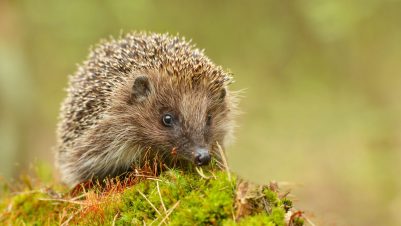Many of Britain’s native horse breeds are threatened with extinction and can only be saved through urgent action by breed societies and individual breeders, participants in a National Equine Forum online seminar were told.
However, the revival in the fortunes of the Cleveland Bay breed shows that it is possible to rebuild a viable population through a well-planned selective breeding programme even after the breed has lost much of its genetic diversity. Moreover, the application of rapid genomic analysis methods and novel reproductive technologies developed for use in other species can help accelerate the process, speakers explained.
Tullis Matson, founder of the equine breeding company Stallion AI Services, warned that horse and pony breeds are suffering from the same pressures affecting thousands of wild species. As a breeding population shrinks it can become dangerously inbred, resulting in low conception rates, poor semen quality and increased neonatal mortality. This creates what biologists are calling an “extinction vortex”, he said.
Of the UK’s 14 native horse and pony breeds, 12 are now classified as rare and five are considered critically endangered, with fewer than 300 females. Those surviving populations show dangerous levels of inbreeding according to their inbreeding coefficient, which measures the likelihood of the same gene allele appearing in the chromosomes of both parents. So, a mating between two full siblings would produce offspring with an inbreeding coefficient of 25 percent, but the typical inbreeding coefficient for Shire horses, for example, is even higher at 28 percent, Tullis explained.
Problems with low genetic diversity also affect racing Thoroughbreds, as every registered stallion in the UK is descended from one of three used to establish the breed in the early 18th century, noted Simon Cooper, director of the Weatherbys stud book. However, changes in breeding practices in the 1990s have exacerbated the problem – a successful stallion may now be used in 300 matings a year, up from 50 or so in previous generations.
The racing authorities in all 69 countries with a Thoroughbred racing industry are working together to create more sustainable breeding policies, including restrictions on the number of mares that can be covered by each stallion.
But a more precise method for tackling inbreeding was described by Paul Flynn, head of Weatherbys Scientific in Ireland. His project has compared the genome in 190 individuals of the Kerry Bog Pony breed using the latest single nucleotide polymorphism (SNP) technology to identify 150,000 genetic data points from each animal. The results showed that despite its small population, the breed is much less inbred than many other breeds native to the British Isles. The project has also demonstrated the utility of these methods in developing management plans for other rare breeds or species.
However, progress is possible even without sophisticated genomics technologies. Andy Dell from the Cleveland Bay Horse society described SPARKS (Single Population Animal Records Keeping System), set up in 2004 after pedigree details were digitised for all remaining animals in the breed. Andy created the software to compare the levels of kinship between different horses and make recommendations for breeders, according to a colour-coded system, on the advisability of mating any two individuals. Applying these guidelines has allowed breeders to increase the effective population size, in terms of the number of suitable breeding mares available, up to 147 from a low point of less than 20 three decades ago.
“This is just another tool in the toolbox,” said Andy, “but it is one that leaves the breeder in control. It allows them to make appropriate choices, not just for themselves but for the breed as a whole, by helping them avoid highly damaging matings. It makes sure that what they do leaves as much as possible of the genetic diversity in the breed available for future generations.”
Tim Morris, vice-chair of the Rare Breeds Survival Trust, argued that it is essential that efforts to preserve the UK’s endangered equine breeds make use of the genetic diversity available in populations of horses in countries beyond Europe, and particularly the United States.
Andy agreed that it was vital to make use of the whole available gene pool, although there are often bureaucratic problems in obtaining the authorisations needed to bring in live animals, semen or oocytes from outside the EU. It was also essential that any horse providing genetic material to be traded internationally was subject to strict health testing to avoid any lapse in biosecurity standards.
Tullis Matson could foresee a time when established reproductive technologies such as artificial insemination and embryo transfer are used as routinely in horses as they are in cattle breeding. Also, it should not be long before more advanced techniques such as post-mortem epididymal sperm extraction, intracytoplasmic sperm injection and semen sorting techniques will become cost effective in horses. Indeed, the latter technology, which separates sperm cells according to their mass (gametes carrying the female X chromosome are typically 4 percent heavier than male cells) was successfully used in equines for the first time last year to produce a female Suffolk Punch filly.











